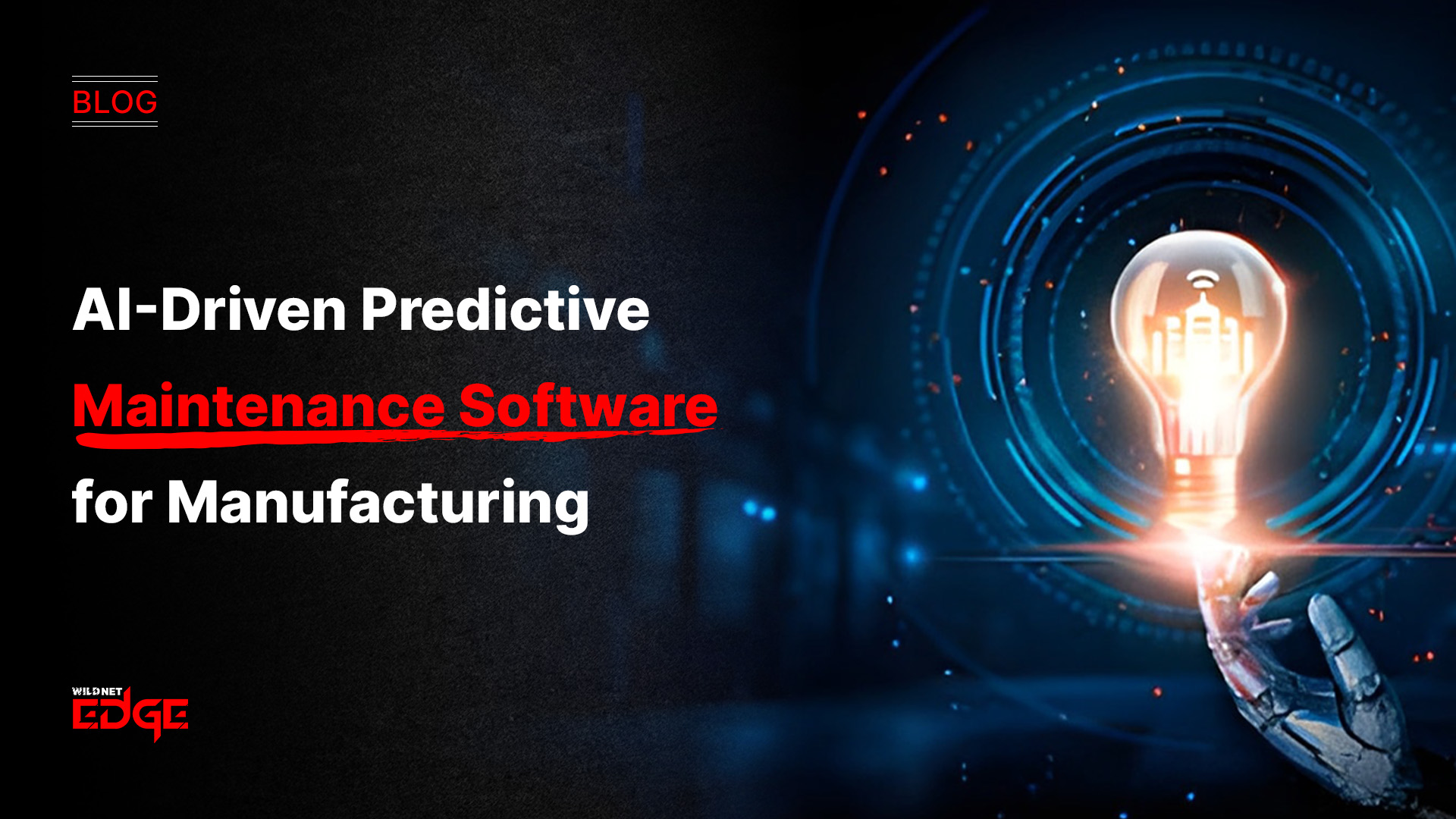Are you tired of unexpected equipment failures disrupting your manufacturing process? Imagine a world where you can predict and prevent these breakdowns before they even happen. With AI-driven predictive maintenance software, you can transform your operations and maximize efficiency. In this blog, we’ll explore how this technology can revolutionize your manufacturing strategy.
The Role of AI in Manufacturing
The integration of AI technologies in the manufacturing sector is reshaping how companies operate. As industries strive for operational excellence, AI is emerging as a vital player, enhancing productivity and efficiency. By leveraging machine learning algorithms and data analytics, manufacturers can gain insights that were previously unattainable.
AI in manufacturing enables predictive maintenance software to analyze vast amounts of operational data in real-time. This analysis helps identify patterns and potential issues before they escalate into costly breakdowns. For example, AI can monitor machine vibrations, temperature fluctuations, and other critical parameters to predict equipment failures with remarkable accuracy.
The impact of AI doesn’t stop at predictive maintenance. It extends to optimizing supply chains, enhancing quality control, and improving overall production processes. By automating routine tasks and providing data-driven insights, AI allows manufacturers to focus on strategic initiatives rather than mundane operational challenges.
Moreover, AI fosters a culture of continuous improvement. Manufacturers can adapt quickly to market changes, customer demands, and emerging technologies. This agility not only enhances competitiveness but also ensures long-term sustainability. As AI technologies evolve, their role in manufacturing will only become more pronounced, making it imperative for businesses to embrace this transformation.
Benefits of Equipment Monitoring
Implementing equipment monitoring systems is a game-changer for manufacturers. These systems serve as the backbone of predictive maintenance efforts, offering numerous advantages that directly contribute to operational efficiency.
One of the primary benefits is the ability to obtain real-time insights into machinery health. By continuously monitoring equipment performance, manufacturers can detect anomalies that might indicate impending failures. For instance, if a machine’s operating temperature exceeds normal levels, alerts can be generated, prompting immediate investigation and intervention before a breakdown occurs.
Another significant advantage of equipment monitoring is the reduction of unplanned downtime. Traditional maintenance schedules often lead to unnecessary maintenance tasks, wasting time and resources. In contrast, predictive maintenance software, backed by robust equipment monitoring, enables manufacturers to perform maintenance only when necessary. This targeted approach not only saves costs but also extends the lifespan of machinery.
Additionally, equipment monitoring enhances safety in the workplace. By keeping a close eye on equipment performance, manufacturers can identify hazardous conditions early, reducing the risk of accidents and injuries. This proactive approach not only protects employees but also fosters a culture of safety within the organization.
Finally, the data collected through equipment monitoring can be invaluable for continuous improvement initiatives. By analyzing trends and performance metrics, manufacturers can identify areas for optimization, leading to enhanced productivity and cost savings. In essence, implementing an effective equipment monitoring system is a crucial step toward a more resilient and efficient manufacturing operation.
Key Features of Predictive Maintenance Software
To fully leverage the benefits of predictive maintenance, it’s essential to choose software equipped with key features that enhance its effectiveness. Here are some critical components to consider:
Real-Time Data Analytics
Real-time data analytics is at the heart of predictive maintenance software. This feature allows manufacturers to collect, analyze, and visualize data from various machinery in real time. By monitoring parameters such as temperature, vibration, and operational efficiency, manufacturers can make informed decisions quickly.
Machine Learning Algorithms
Machine learning algorithms play a pivotal role in predictive maintenance software. They analyze historical data to identify patterns and predict future equipment behavior. By continuously learning from new data, these algorithms improve their accuracy over time, ensuring that manufacturers stay one step ahead of potential failures.
User-Friendly Dashboards
A user-friendly dashboard is vital for effective decision-making. Predictive maintenance software should feature intuitive interfaces that allow users to easily access and interpret data. Customizable dashboards enable manufacturers to focus on the metrics that matter most to their operations, streamlining the decision-making process.
Alerts and Notifications
Proactive alerts and notifications are crucial for timely interventions. Predictive maintenance software should be capable of sending alerts to designated personnel when anomalies are detected. This feature ensures that issues are addressed promptly, minimizing the risk of unexpected equipment failures.
Integration Capabilities
Integration with existing systems is another essential feature. Predictive maintenance software should seamlessly connect with other manufacturing systems, such as ERP and MES, to provide a comprehensive view of operations. This integration facilitates data sharing and enhances overall operational efficiency.
By incorporating these key features, predictive maintenance software empowers manufacturers to optimize their operations, reduce downtime, and ultimately enhance productivity.
Future Trends in Predictive Maintenance
As technology continues to evolve, so do the trends in predictive maintenance software. Here are some of the emerging developments that will shape the future of this field:
Increased Use of Machine Learning for Predictive Analytics
The reliance on machine learning for predictive analytics is set to grow. As more data becomes available, machine learning algorithms will become increasingly sophisticated, allowing for more accurate predictions of equipment failures. This trend will enable manufacturers to refine their maintenance strategies, enhancing overall operational efficiency.
Greater Emphasis on Real-Time Monitoring and Alerts
Real-time monitoring will become even more critical as manufacturers seek to minimize downtime. Advanced sensors and IoT devices will play a key role in providing continuous data streams, allowing predictive maintenance software to generate timely alerts. This proactive approach will ensure that manufacturers can address issues before they escalate into major problems.
Integration of IoT Devices for Comprehensive Data Collection
The integration of IoT devices will revolutionize predictive maintenance by enabling comprehensive data collection. IoT sensors can monitor various aspects of machinery, providing a wealth of information that can enhance predictive maintenance efforts. This trend will lead to more informed decision-making and improved overall performance.
Data-Driven Decision-Making
As predictive maintenance software continues to evolve, data-driven decision-making will become the norm. Manufacturers will increasingly rely on data analytics to inform their maintenance strategies, leading to more efficient operations. This shift will empower organizations to make proactive decisions that enhance productivity and reduce costs.
In conclusion, the future of predictive maintenance is bright, with emerging trends poised to transform how manufacturers approach maintenance strategies. By embracing these advancements, companies can position themselves for success in an increasingly competitive landscape.
Conclusion:
In summary, AI-driven predictive maintenance software is not just a trend; it’s a necessity for modern manufacturing. By leveraging this technology, manufacturers can significantly reduce downtime and enhance productivity. The integration of AI, equipment monitoring, and predictive analytics provides a powerful framework for optimizing operations.
At WildnetEdge, we understand the challenges faced by manufacturers in today’s fast-paced environment. Our predictive maintenance software is designed to help you stay ahead of equipment failures, ensuring your operations run smoothly and efficiently. Trust WildnetEdge as your go-to solution for implementing effective predictive maintenance strategies that keep your operations running smoothly.
FAQs:
Q1: What is predictive maintenance software?
Predictive maintenance software uses data analytics and AI to predict equipment failures before they occur, minimizing downtime.
Q2: How does AI improve manufacturing processes?
AI enhances manufacturing by optimizing operations, reducing costs, and improving decision-making through data-driven insights.
Q3: Why is equipment monitoring critical for manufacturers?
Equipment monitoring is critical as it provides real-time insights into machinery health, enabling timely maintenance and reducing unexpected breakdowns.
Q4: What are the costs associated with predictive maintenance?
While initial investments may be high, predictive maintenance ultimately saves costs by reducing downtime and extending equipment lifespan.
Q5: How can I implement predictive maintenance in my factory?
Start by assessing your current equipment, investing in the right software, and training your team to leverage data for maintenance decisions.

Nitin Agarwal is a veteran in custom software development. He is fascinated by how software can turn ideas into real-world solutions. With extensive experience designing scalable and efficient systems, he focuses on creating software that delivers tangible results. Nitin enjoys exploring emerging technologies, taking on challenging projects, and mentoring teams to bring ideas to life. He believes that good software is not just about code; it’s about understanding problems and creating value for users. For him, great software combines thoughtful design, clever engineering, and a clear understanding of the problems it’s meant to solve.
 sales@wildnetedge.com
sales@wildnetedge.com +1 (212) 901 8616
+1 (212) 901 8616 +1 (437) 225-7733
+1 (437) 225-7733































